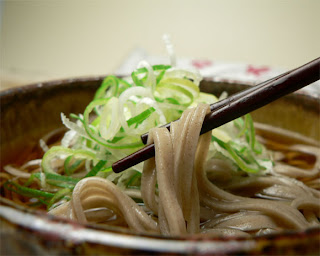 Hi♪ Happy New Year ^^☆
Hi♪ Happy New Year ^^☆This was the first time I experienced the New Year in Brazil.
It was little different from Japanese one.
In this post, I'll introduce you how the traditional Japanese New Year is.
On New Year's Eve, there's some traditional TV programs in Japan.
This time, I'll introduce you the most famous one which is Ko(red)haku(white) Uta (song)Gassen (battle). The picture ( the photo taken by 大橋純人) of it is at the bottom.This is an annual music show on New Year's Eve in Japan which is produced by Japanese broad caster NHK and broadcast on both television and radio. Literally, this programme devides the most popular music artists of the year into competing teams of red and white. The red team is composed all female artists, while the white team is composed all male artists. The honor of performing on Kohaku is strictly by invitation , so only the succesful J-Pop artists and enka singers can perform. Win and loss is judged by the judges who are the succesful people chosen by NHK. This time, the white team won ♪ This programme is gorgeous and wonderful one.

Then, when the New Year came, what happen in Japan?
In Brazil, I saw a lot of fireworks. They were so beautiful.
In Japan, the temple bell toll on New Year's Eve is rung. So, it's completely different from the colorful one in Brazil.
 And, at the same time, Japanese eat the buckwheat noodles eaten on New Year's Eve. We eat it for luck in the New Year.
And, at the same time, Japanese eat the buckwheat noodles eaten on New Year's Eve. We eat it for luck in the New Year.
As a breakfast in January 1st, Japanese eat traditional New Year's food which is called Osechi -Ryori (the picture is at the bottom). The dishes that makes up Osechi has a special meaning celebrating the New Year.

[Daidai] - Japanese bitter orange. It means "from generation to generation". So, it simborizes a wish for the children in New Year.
[Datemaki] - Sweet rolled omelette mixed with fish paste or mashed shrimp. They simporize a wish for many auspicious days.
[Kamaboko] -Broiled fish paste. Traditionally, slices of red and white kamaboko are used. The color and shape are reminiscent of Japan rising sun, and have a celebrately, festival meaning.
[Kazunoko] -Herring roe. It simbolizes a wish to be gifted with numerous children in the New Year.
[Konbu] -The food which is the kind of seaweed. It simbolizes 'joy'.
[Kurikinton] - Mushed chestnut which color is gold.
[Kuromame] -Brack soybeans. It simbolizes a wish for health in the New Year.
[Tai] -A red sea-bream. It simbolizes an auspicious event.
[Tazukuri] -Dried sardines cooked in soy sauce. The symbolism is of an abundant harvest.
[Zoni] -The soup of mochi rice cakes.
Because I'm in Brazil, I couldn't eat all of them this time.
But, I could eat Kamaboko,Kazunoko,Kuromame,Kurikinton, and Zoni.
I like zoni. It's delicious♡
On the New Year, Japanese send the New Year card to friends, teachers, colleague, an so on.
I receive a lot of New Year card every year. I'm always looking forward to receive it ♪♪
Each person designs own New Year card and put their own message on it.
So, it's really fun event for me ^^ There's some examples at the bottom.



Each country has a traditional way of celebrating the New Year.
It's wonderful and interesting, isn't it?
May the new year bring you happiness! (●^o^●)♡

1 comment:
今年もよろしく~!!
ムははは!(何)
今年も遊ぼうね!!
Post a Comment